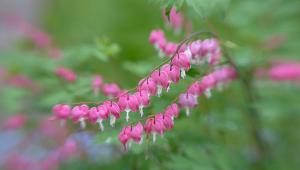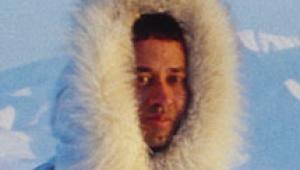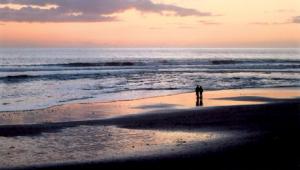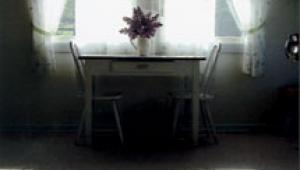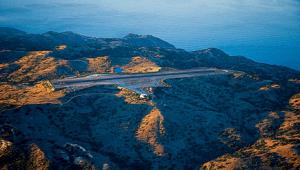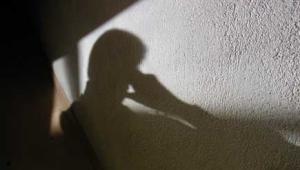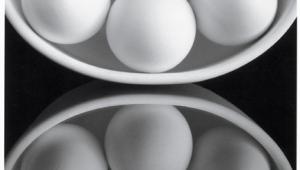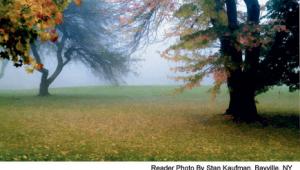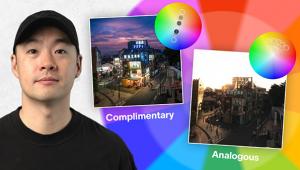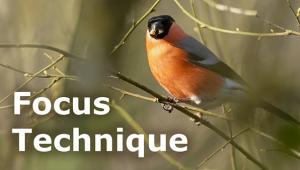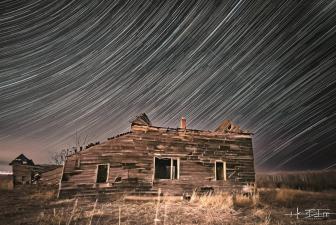Abe Ordover: Natural Abstractions Page 2
Ordover shoots with a Canon EOS-3, and primarily EF 100--400mm IS and 28--135mm IS lenses (two of Canon's Image Stabilizing models), and the medium-format Pentax 67II. He's particularly excited about his most recent purchase, the Canon EOS 10D digital SLR. "What's marvelous is that with film, I bracket exposures, but I still don't know what my images are going to look like until I get the processed film back. With digital imaging, you can see the results right away." He's planning on taking the 10D on an upcoming trip to New Mexico. "The image quality from this camera is amazing!"
 |
|
|
Up until Ordover began shooting
digitally, he says, he scanned his images on an Epson 1680 Pro, which is both
a flatbed and film scanner. He prints most of his work on an Epson 7600 printer
"except for the really large prints," which he sends to a lab.
He also uses Photoshop 7. "In addition to using it for all the standard
darkroom practices," he notes, "I like to accent color. And in my
Impressionistic work, I isolate a piece of the larger image." He points
out that these isolated portions of the "big picture" gain different
qualities when enlarged. He also seeks to emphasize color and texture in his
finished work, and likes to stylize images. However, he rarely composites photos.
"The only time I'll do this is when I create a collage."
 |
|
|
What the Future Holds
He also owns The Ordover Gallery in Solana Beach, California. "We started
this venue with my images in July, 2003," he says, adding that the purpose
of the gallery is to give talented nature photographers an opportunity to show
art-quality work. "We're having a good deal of success in drawing
major artists," he states. "Frans Lanting will be showing with us
for seven weeks--July through September, 2004."
Last fall, Ordover had an exhibit at the Wickiser Gallery in SoHo, New York,
entitled "Reflections," which emphasized the beautiful colors and
abstractions found in reflective water surfaces. He had exhibits at Georgia
Tech in Atlanta in 2002, and at The Parthenon in Nashville in 2003. He's
also on the board of "Atlanta Celebrates Photography," a month-long
annual photo event in October.
 |
|
|
Ordover still works primarily as
a mediator and arbitrator for environmental and commercial cases. He resides
in Atlanta, and plans to move to San Diego in the near future, where he'll
make photography his full-time career.
In the meantime, he has gallery showings scheduled throughout 2004: Fernbank
Museum of Natural History (February-May), which will feature animal images;
his "Reflections" show will appear at Northwood University, Michigan
(January-April); St. Olafs College, Minnesota (January-February); Anniston Museum,
Alabama (April-June); and Jaqueline Casey Hudgins Museum, Gwinett County, Georgia
(September, 2004-January, 2005). A special Olympics show, which will include
some of Ordover's images, will be held at the Parthenon in Nashville,
Tennessee, during the summer of 2004.
 |
|
|
Three Tips for Artistic Images
Ordover likes to create his own personal vision when photographing the natural
world, and shares a few simple techniques:
1. An isolated portion of a picture becomes art. The image
entitled "Crowned Cranes" is a small piece of a larger image that
Ordover photographed in Tanzania. Once he concentrates on the isolated "picture
within a picture," in Photoshop, it becomes a new image, he points out.
He says he never "paints" a photo to give the appearance of Impressionism,
but in this case, he recontoured the cranes with the clone tool, and "emphasized
particular foreground aspects with a variety of plug-ins." He altered
the brightness and contrast in the main subjects, and used the clone tool and
the blur tool to simplify the busy background.
He says that when he works with
colors in Photoshop, he chooses the "selective color" in the Image
dialogue box so he can work with one color at a time. "This allows me
to do more isolated color work than would the `color balance' tool,
which affects all colors in a photo."
2. Moving and removing compositional elements. Ordover says
that in his reflection photos, he often "moves water." His image,
"Boats, Maine, 1999" exemplifies this. "I removed an ugly
dock on the left side of the boats with Photoshop, painted one boat blue, and
used the cloning tool to repeat water patterns." The colors in the water,
which are basically from building reflections, were enhanced slightly. "My
goal here was to make a more Impressionistic piece from this image."
3. Conveying emotion. In the "Imaginings" section
of Ordover's Website (www.ordovergallery.com),
there is an image entitled "Salt and Sky, California, 2002," in
which he added a lot of black to the clouds, to make the sky more menacing.
The result is a very dramatic, ominous photograph. "What I'm trying
to do with my work is to convey to the viewer what I felt at that scene,"
he asserts. In this case, he chose to bring attention to the sky. "Emotion
is what I'm trying to convey."
Ordover says that he strives to make viewers feel that they're part of
the scene, and to feel the way he did when he stood at that spot. "That's
what I'm trying to do with my nature photography."
- Log in or register to post comments
